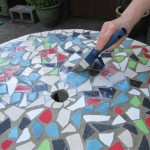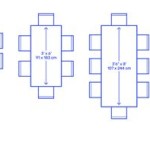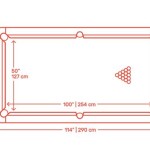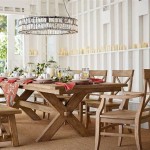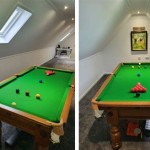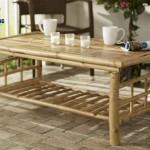Side Table World Market: Trends, Drivers, and Future Outlook
The global side table market is a dynamic sector within the broader furniture industry. Side tables, characterized by their compact size and versatile functionality, serve as essential pieces in residential, commercial, and hospitality settings. This article provides an overview of the global side table market, highlighting key trends, driving forces, and the overall market outlook.
Side tables are frequently used to hold lamps, books, beverages, remote controls, and decorative items. Their adaptable nature allows them to be positioned in various spaces, including living rooms, bedrooms, hallways, and even outdoor patios. The demand for side tables is influenced by factors such as interior design trends, urbanization, and changing lifestyle preferences.
The market encompasses a wide array of side table designs, materials, and functionalities. The increasing emphasis on space optimization, coupled with the growing popularity of minimalist aesthetics, has significantly contributed to the demand for these versatile furniture pieces. Furthermore, the rise of e-commerce platforms has broadened consumer access to a diverse selection of side tables from manufacturers worldwide.
Material Diversity and Design Innovation
The global side table market features a broad spectrum of materials, each offering distinct aesthetic and functional characteristics. Wood, including hardwoods like oak and maple, remains a prevalent choice, prized for its durability and classic appeal. Metal, encompassing materials like steel and aluminum, provides a modern and industrial aesthetic, often favored for contemporary designs. Glass, whether transparent or opaque, brings an element of sophistication and can create a visual sense of spaciousness. In addition to these traditional materials, the market is witnessing an increase in the use of manufactured woods, such as MDF (Medium-Density Fiberboard) and particleboard, particularly in mass-produced furniture offerings due to their cost-effectiveness.
Furthermore, the use of composite materials, such as those combining wood with resin or metal accents, is gaining traction. This allows for unique design possibilities and enhanced durability. The material selection often depends on the target consumer demographic, the intended use of the side table (indoor vs. outdoor), and the overall interior design style. The rise of sustainable and eco-friendly materials is also influencing material choices, with consumers increasingly seeking options made from reclaimed wood, bamboo, or recycled materials.
Design innovation plays a vital role in shaping the side table market. Beyond the standard rectangular or square designs, manufacturers are experimenting with geometric shapes, asymmetrical forms, and modular configurations. Nesting side tables, which can be stacked or nested together to save space, are gaining popularity, particularly in urban dwellings where space is at a premium. Folding side tables offer similar space-saving benefits, allowing for easy storage when not in use.
The integration of technology is also emerging, with some side tables incorporating features such as integrated charging ports for electronic devices or built-in Bluetooth speakers. These features enhance the functionality of the side table and cater to the needs of modern consumers. Moreover, customizability is becoming a key differentiator, with manufacturers offering options for consumers to personalize their side tables with specific finishes, colors, or hardware to match their individual preferences and interior décor.
The increasing availability of 3D printing technology is also having an impact, enabling designers to create complex and intricate side table designs that would be difficult or impossible to produce using traditional manufacturing methods. This opens up new avenues for design innovation and allows for greater customization possibilities.
Key Market Drivers and Restraints
Several factors are driving the growth of the global side table market. Urbanization is a significant contributor, as the increasing concentration of populations in urban areas leads to a greater demand for compact and multi-functional furniture pieces. Side tables, with their small footprint and versatile usability, are well-suited for urban living spaces, where space optimization is a key consideration. The increasing number of apartments and condominiums, often with limited square footage, further fuels the demand for these space-saving solutions.
Changing lifestyle preferences also play a significant role. The rise of smaller families and single-person households has led to a greater demand for furniture pieces that are proportionate to the size of these households. Consumers are increasingly seeking furniture that is stylish, functional, and easy to move, making side tables an appealing choice. The growing emphasis on home décor and interior design is another important factor. Consumers are increasingly investing in furniture that reflects their personal style and enhances the aesthetic appeal of their homes. Social media platforms, such as Pinterest and Instagram, play a significant role in influencing interior design trends and driving demand for specific furniture styles, including side tables.
The e-commerce boom has significantly expanded the reach of furniture manufacturers, including those specializing in side tables. Online platforms provide consumers with access to a wider variety of products, price points, and designs than traditional brick-and-mortar stores. The convenience of online shopping, coupled with the ability to compare prices and read customer reviews, has made e-commerce a preferred channel for many consumers. Furniture retailers are increasingly investing in their online presence, offering enhanced product information, virtual showrooms, and streamlined delivery options.
Despite the numerous drivers of market growth, certain factors may restrain the expansion of the global side table market. Economic downturns can negatively impact consumer spending on discretionary items such as furniture. Fluctuations in raw material prices, particularly wood and metal, can affect the cost of manufacturing side tables, potentially leading to price increases and reduced demand. Intense competition among manufacturers can also put pressure on profit margins. The availability of low-cost alternatives, such as repurposed furniture or DIY (Do-It-Yourself) projects, could also pose a challenge to market growth.
Regional Market Analysis and Future Trends
The global side table market exhibits significant regional variations in terms of demand, preferences, and market dynamics. North America and Europe are mature markets, characterized by high disposable incomes and a strong emphasis on interior design. These regions are witnessing a growing demand for high-end side tables made from premium materials and featuring innovative designs. Asia-Pacific is expected to be the fastest-growing market, driven by rapid urbanization, increasing disposable incomes, and a growing middle class. China and India are key markets in this region, with a large and growing population that is increasingly interested in upgrading their homes and lifestyles.
Latin America and the Middle East and Africa are emerging markets with significant potential for growth. These regions are witnessing increasing urbanization and a growing demand for affordable furniture solutions. The rise of e-commerce in these regions is also expanding access to a wider range of side table options. The specific preferences and trends within each region may vary. For example, in some regions, traditional designs and materials may be favored, while in others, more modern and contemporary styles may be preferred. Understanding these regional nuances is crucial for manufacturers looking to expand their presence in these markets.
Looking ahead, the global side table market is expected to continue to evolve, driven by ongoing trends in interior design, technology, and consumer preferences. The demand for sustainable and eco-friendly side tables is likely to increase as consumers become more environmentally conscious. The integration of smart technology and connectivity is also expected to become more prevalent, with side tables incorporating features such as wireless charging, built-in lighting, and voice control. The focus on space optimization and multi-functionality will remain strong, particularly in urban areas. Manufacturers will need to continue to innovate and adapt to meet the changing needs and preferences of consumers to succeed in this competitive market.
The use of digital marketing and social media will continue to play a key role in driving demand. Online platforms provide manufacturers with a powerful tool for reaching potential customers, showcasing their products, and building brand awareness. The increasing use of augmented reality (AR) and virtual reality (VR) technologies could also transform the way consumers shop for furniture, allowing them to visualize how a side table would look in their home before making a purchase. These technologies are expected to become more widespread in the coming years, further enhancing the online shopping experience.

Wood And Black Metal Multi Level End Table World Market

Round White Marble And Black Metal End Table World Market

Tilton Round Geo Pedestal Outdoor Side Table World Market

World Market Wood And Metal Aiden End Table Furniture Tables Farmhouse Style

Demetrios Metal Outdoor Side Table World Market

Everett Weathered Natural Wood End Table World Market

Cost Plus World Market Wood Anton Accent Table

Segovia Eucalyptus Outdoor Coffee Table World Market 48 Off

Cost Plus World Market Gold Metal And Glass Arley Accent Table Side Dining Room Bench

Sansur Rustic Pecan Live Edge Wood Coffee Table World Market


